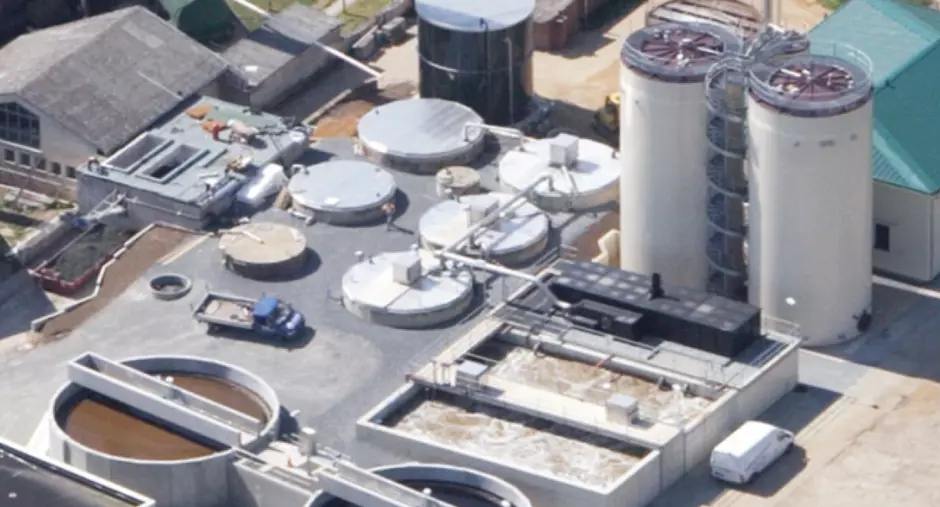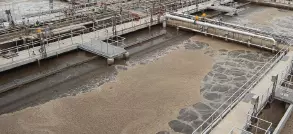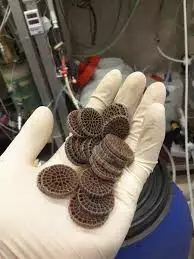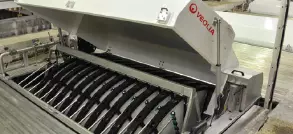Pulp and Paper facilities are leading consumers of water for their production processes. This combined with the high concentrations of solids and organic contaminants within wastewater streams make it critical for companies to have a robust and reliable treatment system before discharge. As pulp and paper companies look to expand or modify operations at their manufacturing facilities, they need to ensure that non-production infrastructure, such as wastewater treatment, will be flexible and meet their treatment and discharge specifications. Furthermore, as regulations continue to become more stringent, companies may be required to enhance their existing wastewater treatment facility to remain in environmental compliance, especially for direct discharge applications.
Fortunately, for existing pulp and paper facilities it may be possible and cost-effective to retrofit new technologies into current wastewater treatment processes to allow for increased flows, additional loads (BOD / COD), improved TSS (Total Suspended Solids) removal, and nutrient removal, as well as combat odor. Regardless of the driver for considering a wastewater enhancement project, it is important for manufacturers to carefully consider technologies and processes that will provide consistent and reliable wastewater treatment while simultaneously supporting the short and long term goals of the facility.
Enhancing COD (Chemical Oxygen Demand) Removal Using High Rate Anaerobic Digestion
Using advanced anaerobic digestion systems within an existing wastewater treatment process can significantly improve COD (Carbon Oxygen Demand) removal. Since the early eighties, Biothane® High Rate Anaerobic wastewater treatment systems have been successfully applied in pulp & paper industry. The first applications of anaerobic technology in the pulp & paper industry were at recycle paper factories, as they produce excessive wastewater from the production processes. Also, pulp mill related effluents such as: BCTMP (Bleached Chemical Thermo-Mechanical Pulp), NSSC (Neutral Sulfite Semi-Chemical) and chemical pulp condensates were successfully treated in anaerobic reactors. Because of its high removal rates, short retention time, low energy demands, low solids production, and treatment reliability, many of these systems have been integrated into the wastewater treatment process.
When retrofitting an existing facility, Biothane® anaerobic digestion systems are commonly installed as pretreatment step, prior to aerobic treatment. By leading with anaerobic treatment, between 70-90% of the COD can be removed. This allows for downstream biological processes to be more efficient in their BOD/COD removal. The integration of this retrofit can allow for increased treatment capacity and significantly improve removal rates for the entire system.
In addition to the improved removal rates, Biothane High Rate Anaerobic systems require less electricity to operate, produce less sludge, and will produce biogas as a byproduct. Biogas can be used as an onsite renewable energy fuel source and consumed in the plant’s boiler or sent to a combined heat and power (CHP) generator.
Improving Aerobic Wastewater Treatment and Nutrient Control Using High-Performance MBBR (Moving Bed Biofilm Reactors)
Aerobic biological wastewater treatment is one of the most utilized processes at pulp and paper mills, most commonly in the form of activated sludge systems or aerated lagoons. These systems have historically been trusted to provide biological treatment at pulp and paper facilities, however stricter discharge limits and the need to improve capacity resulted in many facilities searching for solutions to optimize or expand their aerobic wastewater treatment process. Many mills turn to AnoxKaldnes™ MBBRs (Moving Bed Biofilm Reactors) as a flexible, high-performance technology to enhance their wastewater treatment system.
MBBR is a flexible technology that utilizes small plastic carriers, also called media, where biofilm grows. These carriers are suspended and circulate within the reactor to maximize the removal of COD, nutrients, and other pollutants. One of the main benefits of the AnoxKaldnes MBBR is its flexibility. It can be retrofitted as a stand-alone system (Pure MBBR), a BAS™ process that places the MBBR reactor before the activated sludge system, or a HYBAS™ solution that combines the AnoxKaldnes™ MBBR technology and activated sludge in the same tank. This technology can also be paired with existing lagoons to enhance removal rates and encourage nitrification, even at low temperatures. It is the flexibility of the AnoxKaldnes MBBR which allows pulp and paper companies to optimize and expand their wastewater treatment. In many cases, these MBBR retrofits utilize existing equipment or tanks, making it a very cost-effective strategy to increase the capacity, stability and/or performance of an existing wastewater treatment facility.
Regardless of how this technology is integrated, the high-performance characteristics of the AnoxKaldnes MBBR protect the activated sludge system from sludge bulking, improves sludge settleability within the activated sludge system, and results in superior removal rates to help pulp and paper companies achieve strict discharge regulations. Also, the AnoxKaldnes MBBR is able to reduce the discharge of nutrients, such as nitrogen and phosphorus, to help companies achieve nutrient discharge limits.
Enhancing TSS (Total Suspended Solids) Removal with Tertiary Treatment
Biological treatment is an effective method to remove soluble contaminants in the wastewater stream, there is usually a high concentration of solids that have to be removed prior to being discharged to surface waters. Clarification is the most common method for removing TSS; however, to achieve strict TSS limits, additional tertiary treatment is needed. A technology that is commonly used for fine particle filtration is Hydrotech microscreen discfilters. Hydrotech discfilters utilize a woven synthetic media cloth for TSS removal.
Existing installations in the P&P market help customers comply with local TSS and phosphorous discharge limitations by reducing TSS in normal operation by 50 - 80%, and up to 98% in situations where the upstream clarifier is bulking. By doing this, the Hydrotech filter adds robustness to the wastewater treatment plant independent of upstream performance.
Discfilters have the additional benefit of being extremely compact. An installation at a paper plant site in Alabama manages a peak flow of 2,500 gpm on a footprint of 7 ft x 20 ft.
Need to Expand or Enhance Your Existing Wastewater Treatment Facility?
As pulp and paper manufacturers continue to expand and enhance their operations, their wastewater treatment needs will likely follow suit. If there is a need to consider an enhancement project, it is important to engage an industrial wastewater treatment technology company as early as possible. It is just as critical to partner with a company that has extensive experience specifically working with pulp and paper facilities. In many cases, this experience expedites the process of identifying the most effective and economical processes and technologies to help you achieve your wastewater treatment goals.

Biothane® Wastewater Treatment Plant at a Pulp & Paper Facility

AnoxKaldnes BAS™

AnoxKaldnes™ MBBR Media

Hydrotech Discfilters


